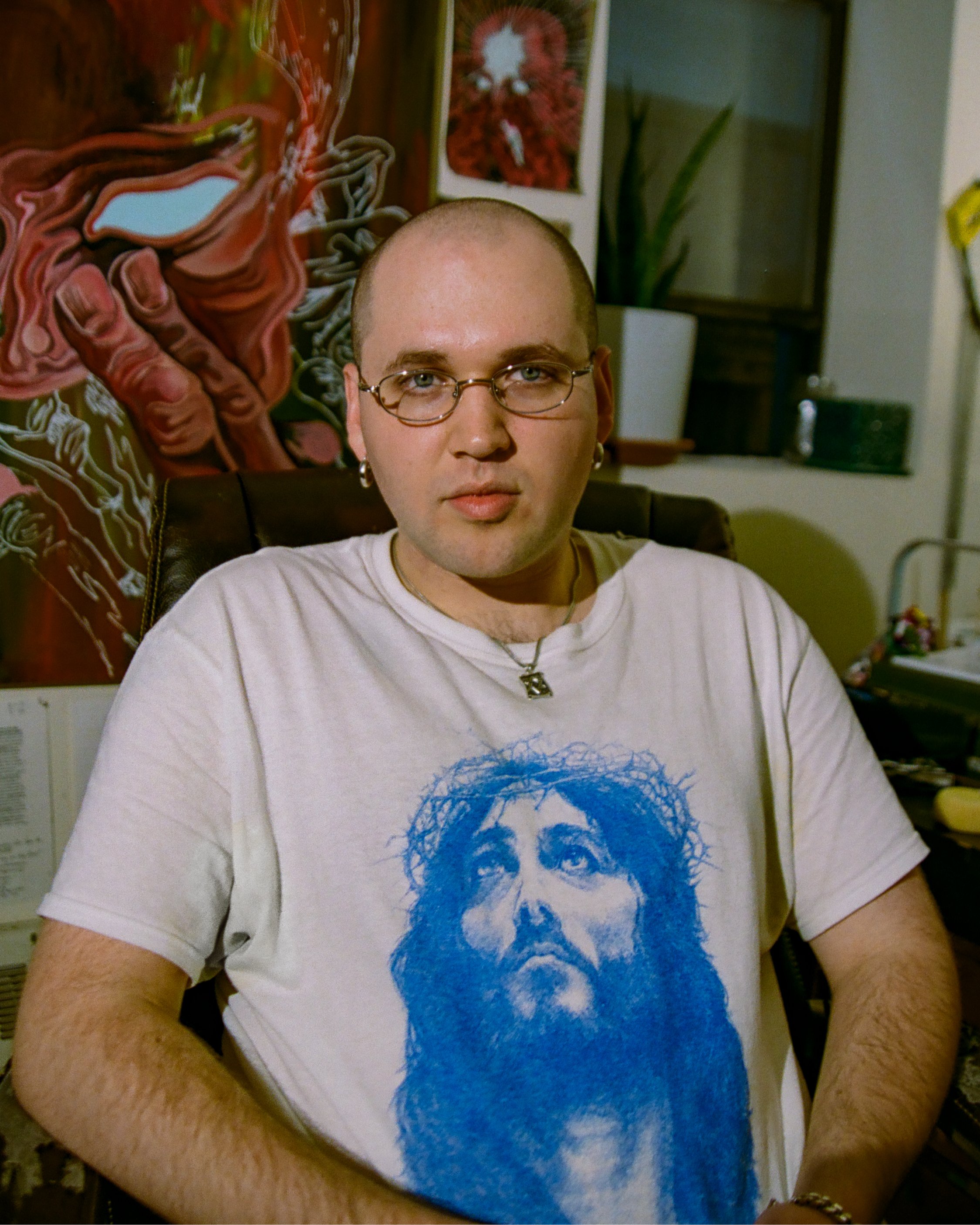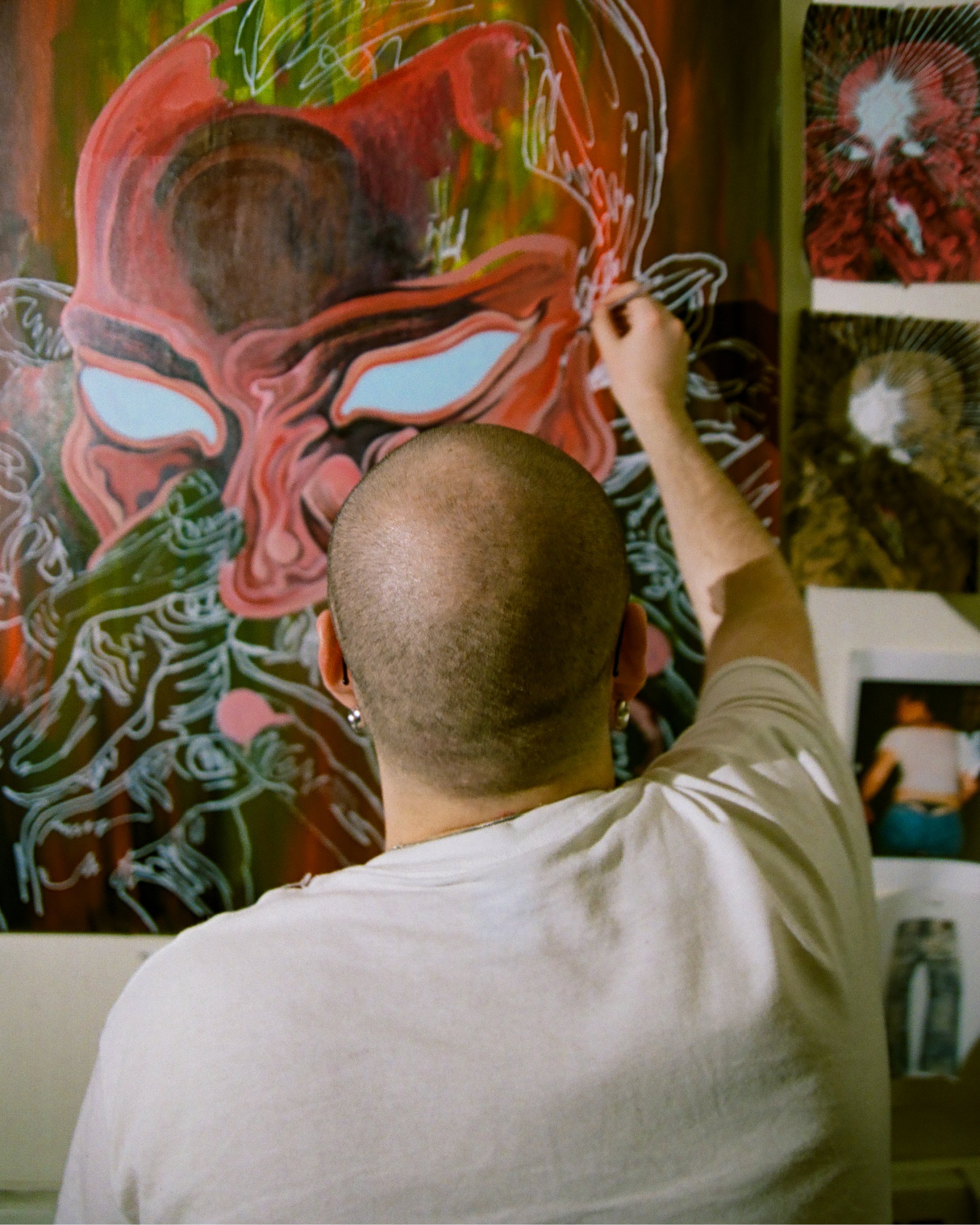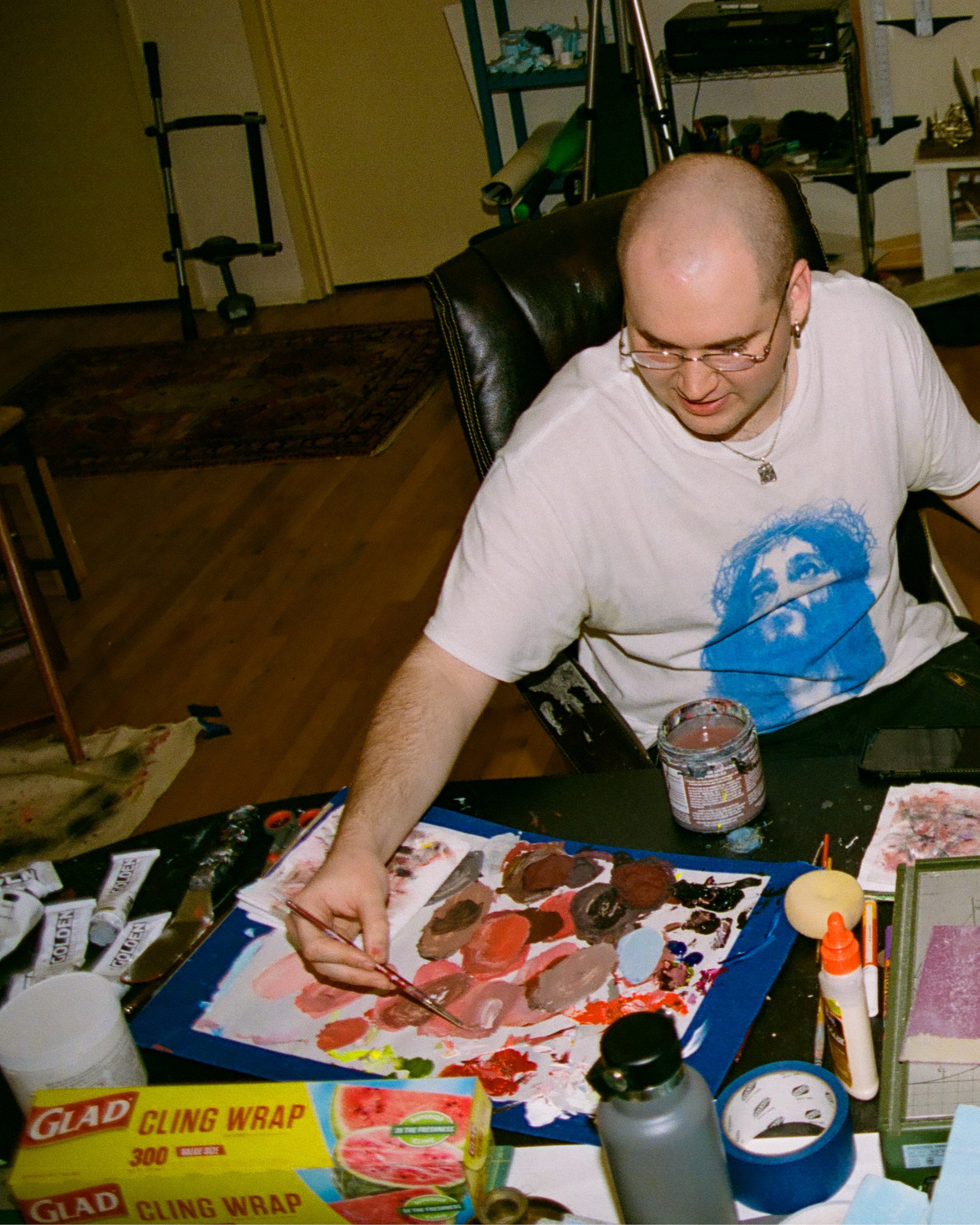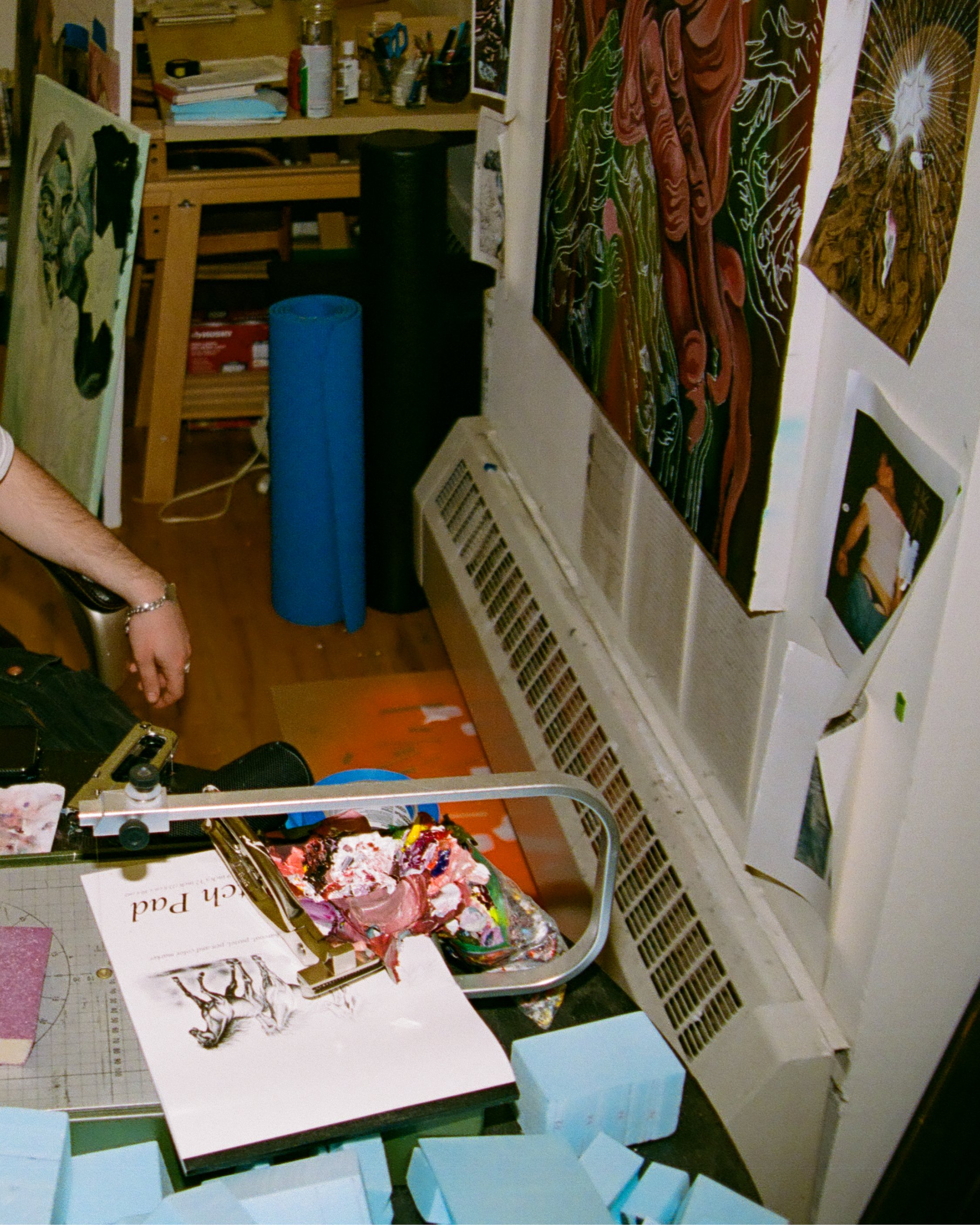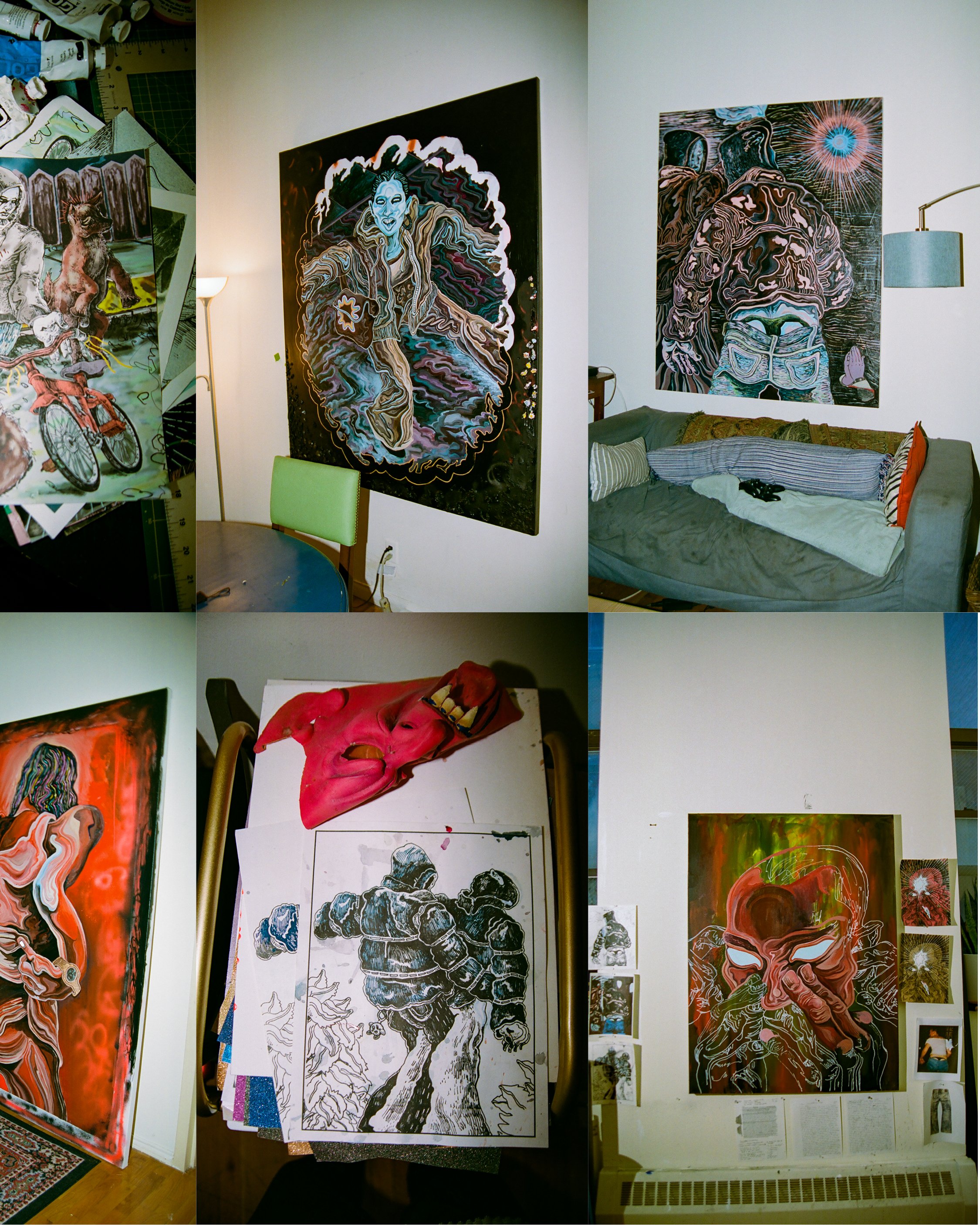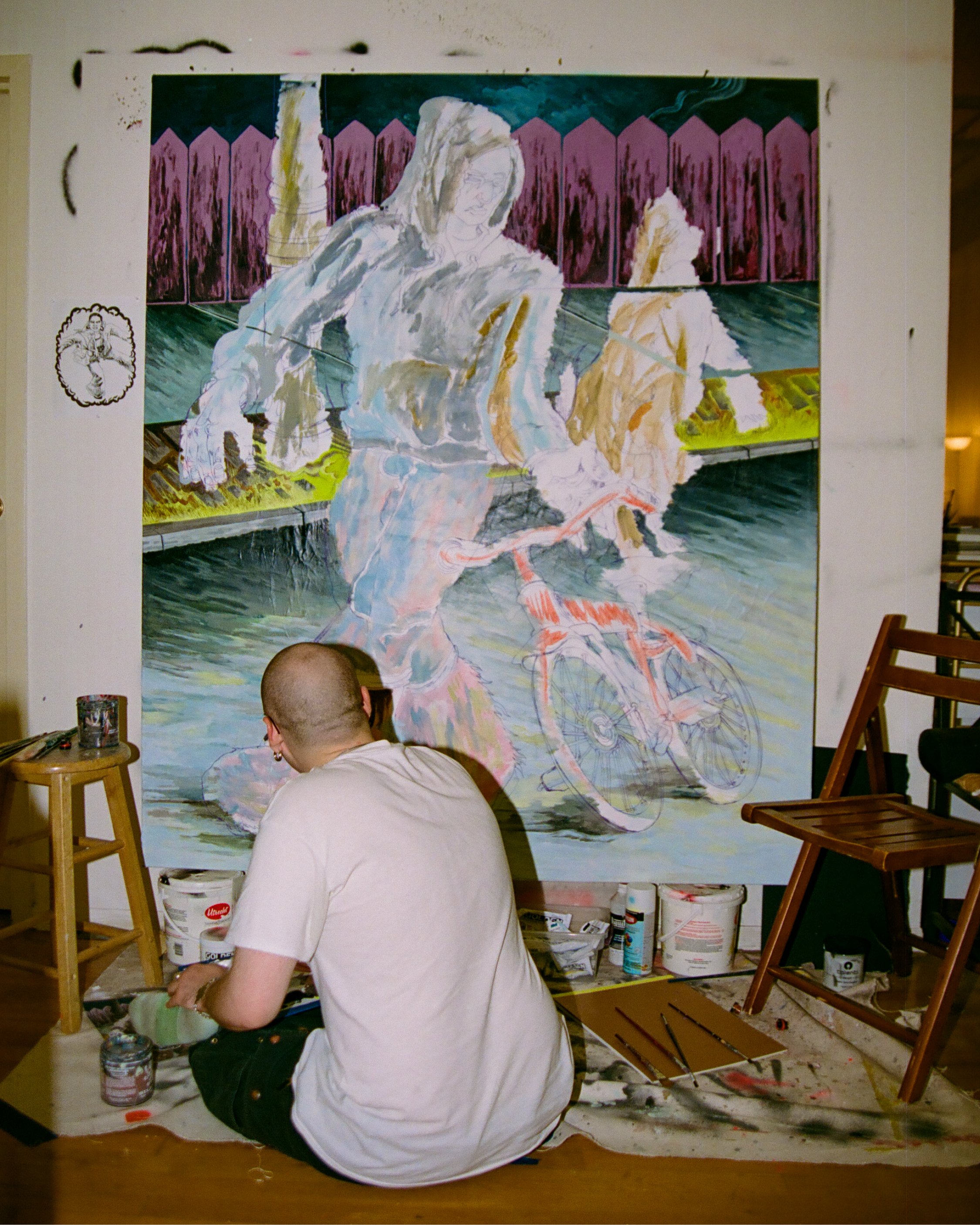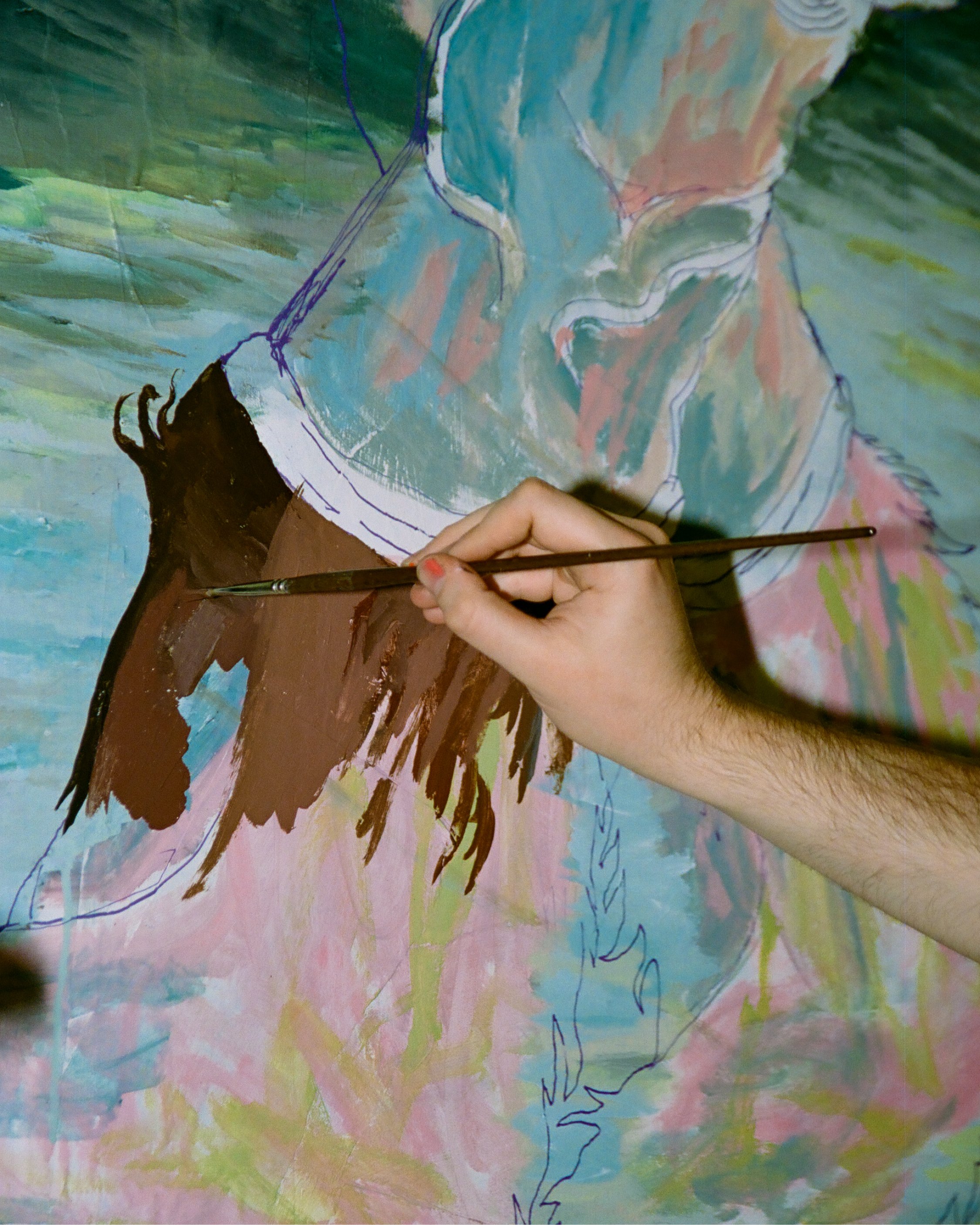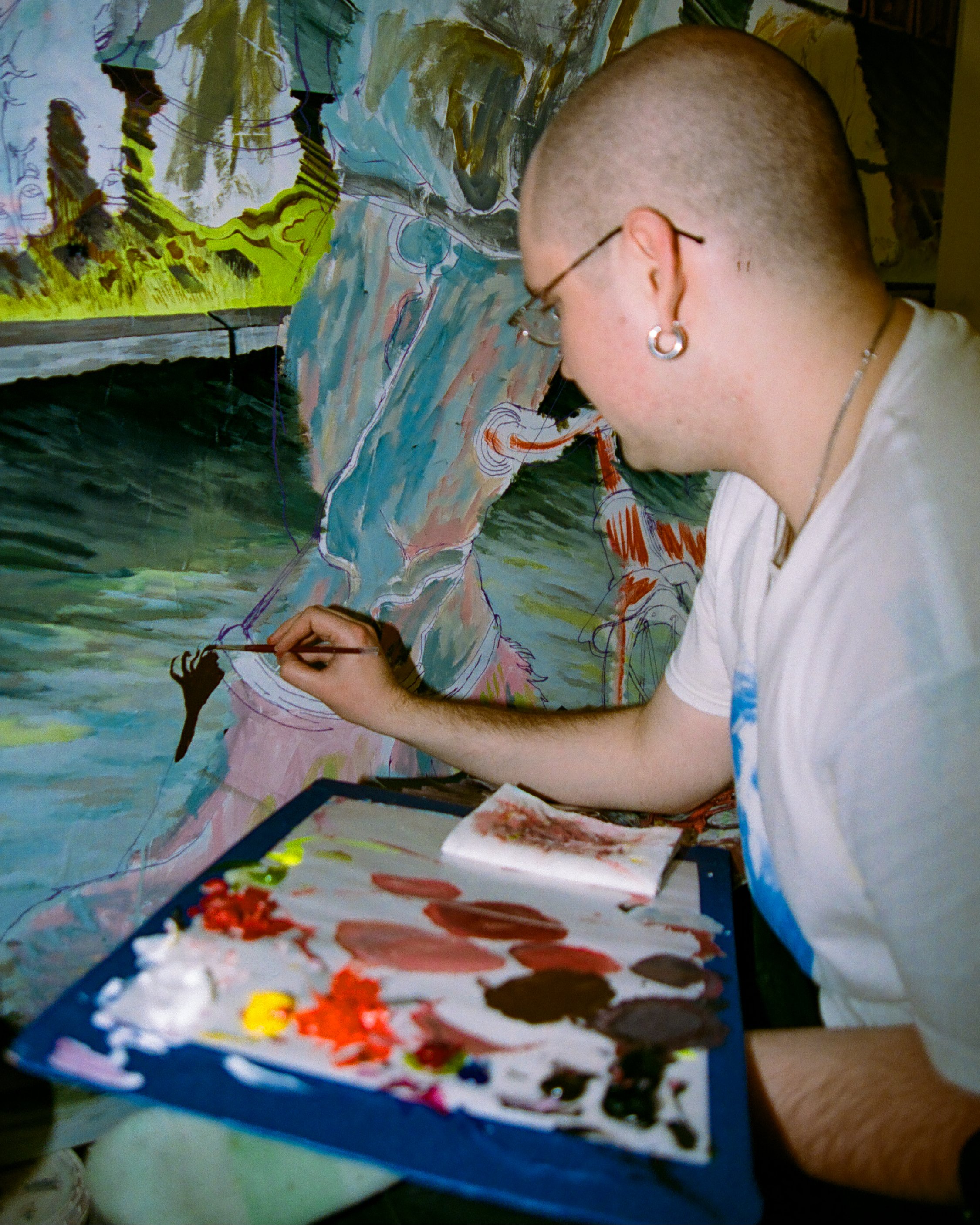Sam Lindenfeld is a multidisciplinary illustrator, designer and fine artist. Born and raised in Washington DC and currently based in Brooklyn, NY. Sam's work has been shown at the Hirshhorn Museum in DC, recognized by the American Illustrators Archive, and he acted as Art director of the album "Nothing Changes if Nothing Changes" by Radamiz. He is currently working on a solo show of paintings and illustrations. His process starts with a highly detailed illustration with pen, marker, water color, and more. Then, he scans his work to augment and enhance the color. When the colors feel right, he begins painting. I photographed Sam painting two works in progress, potentially for his show. His work centers around his experiences growing up in DC, jewish identity, and commentary focused on faith and prophecies.
Sam welcomed me into his apartment where his paintings hung throughout. The scale of his paintings immediately surprised me. Each painting took up a massive segment of his place. He showed me into his studio in the center of his apartment where he had many works in progress. Each painting was adorned with taped notes, print outs, images, and reflections. We have been friends for a while so we hopped right into conversation. As I hoped, we covered all the topics we could in the timeI was there.
Sam’s display of Torah segments in his work stems from the interest of narrative storytelling from the original text of the Torah and tying that to the modern context. He speaks about the beginning of his understanding with his identity as a Jew saying; “trauma is the antithesis of identity.” His grandparents, encouraged him to embrace his identity so that he would not be controlled. His illustrations and paintings narrate his inner battles and reflect what that looks like . When he was young, he was diagnosed with Auditory Processing Disorder. This disorder affects the way your brain interprets sounds. It is very difficult for people with this disorder to understand others and even learn how to speak. Sam was told that he may never learn to speak without an impediment. He credits this experience for helping form his practice and outlook. He reflected on growing up in a very diverse city. Sam reflected on his admiration and gratitude for being raised in an environment that exposed him to all variations of culture and life. He became curious about people's outward visual expression of identity and culture.
Sam believes that painters and fine artists are prophetic. He believes they write history before it happens. Painter’s foresight has been proved in novels, paintings, and essays to predict our current circumstances. His paintings comment on the theme of prophecy as they cite passages of the Torah. Sam mentions that the pandemic felt prophesized and dystopic. He cited the 10 plagues and their similarity to the virus. He talked about his journey with his own ego while isolating during the pandemic. He made a conscious decision to take care of his mental health. Controlling his ego and taking time to check in with himself has allowed him to create more genuinely. Sam believes that this process has the power to dictate the greater karmic state and dictate the being of others. His paintings are reflections of societies’ relationship with karmic debt, belief, and expression.

